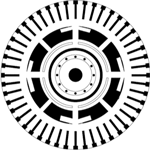Introduction to Postmodernism

Today, we cover all of the philosophy for the entire course (promise). We look at the principals we’ve covered so far, and we add in everything we will have reason to discuss for the rest of the semester. Instead of covering them based on the movement they are related to, we put them back in chronological order.
Plato’s Cave:
We first looked at this idea in relation to the work of James Turrell. This idea shows up in Plato’s Republic, a philosophical work that is presented as a dialogue between philosophers discussing the nature of a just city and a just man. In it, one philosopher describes a metaphor for life. He describes the human condition as similar to prisoners who are chained up in a cave, staring at the back wall. Core points are:
- Men live in ignorance of the true nature of the world, as if they were prisoners in a cave who can only watch shadows of reality.
- The role of the philosopher is to discover the true nature of things, like leaving the cave of shadows and seeing the real world.
- It is natural that apon returning to the cave, the philosopher sounds quite ridiculous to the other prisoners when he describes how the world really is.
Apollonian vs. Dionysian:
Apollo and Dionysus were two sons of Zeus. Apollo is associated with the sun, dreams, reason, and the arts. Dionysus is associated with wine, music, ecstasy, and intoxication. Although they were not originally seen as opposites, today the distinction between the two is often emphasized when describing the nature of artwork. Be careful of absolutism though, now that we live in a monotheistic world, it is all too easy to make black and white distinctions like good vs. evil, light vs. dark, order vs. chaos. Most things in the world are usually a blend of attributes.
Sartre’s Existentialism:
We first studied this as background to the Abstract Expressionists. Core points are:
- First we are born, then we define ourselves.
- Anxiety comes from being responsible for our own actions.
- Blaming others for our actions is acting in bad faith.
Saussure’s Semiotics:
Saussure was a Swiss linguist, and he used what we call structuralism to look at how language works. He said elements of language can be called SIGNS. Every SIGN is a combination of two things: the SIGNIFIER (the image or the sound of the word) and the SIGNIFIED (the mental association we have when we read or hear the word). This is interesting to us, because these ideas have been extended to the visual arts, where elements of pictures are seen as signifiers, and to understand the work, we must decode what is signified.
Barthes’ Myth:
Roland Barthes was one of a group of French philosophers known to us as post-structuralism. They took the ideas of Saussure and applied them in new and interesting ways. One of Barthe’s ideas was to take the idea of the SIGN-SIGNIFIER-SIGNIFIED, and to apply it to the concept of Myths. He explained how additional meaning is culturally heaped upon certain signs in order to elevate them to the status of myth. He uses wine in French society as one example. Wine to the French is much more than just an alcoholic beverage. Even we as Americans have our own perceptions and stereotypes associated with the French and Wine, don’t we? In class we follow the example of the American flag as a myth, and look at many of the places where the American flag shows up in our semester.
Barthe’s Death of the Author:
We studied this before watching Exit Through the Gift Shop. Core points are:
- Any artwork can be read as a “Text”.
- There is no one single “Author” for a “Text”.
- Instead, any Text is a mixture of quotations from other sources.
- It is the responsibility of the Reader to decide the real meaning of the Text.
Foucault’s Panopticon:
Michel Foucault, also grouped under post-structuralism, explored ideas of power and authority, and how they were implemented and how they controlled society. We look at one specific example of his, the Panopticon. At it’s foundation, this idea relates to a specific architectural layout for prisons, where a central guard tower is positioned to have a perfect view of all the prison cells arranged in a ring around it. He explores this design in order to explain how positions of power maintain control by what they are able to see and police. He also explains how, when we never know just when we are being watched, we internalize the policing, and always behave as if we are being watched. As artists, this is particularly important as technology becomes part of the landscape, and part of the list of materials that artists use.
External Links for further reading:
Harun Farocki – Images of the World and the Inscription of War (1989)blogspot review Videograms of a Revolution Another Harun Farocki film, on Youtube Videograms of a Revolution on-line review
